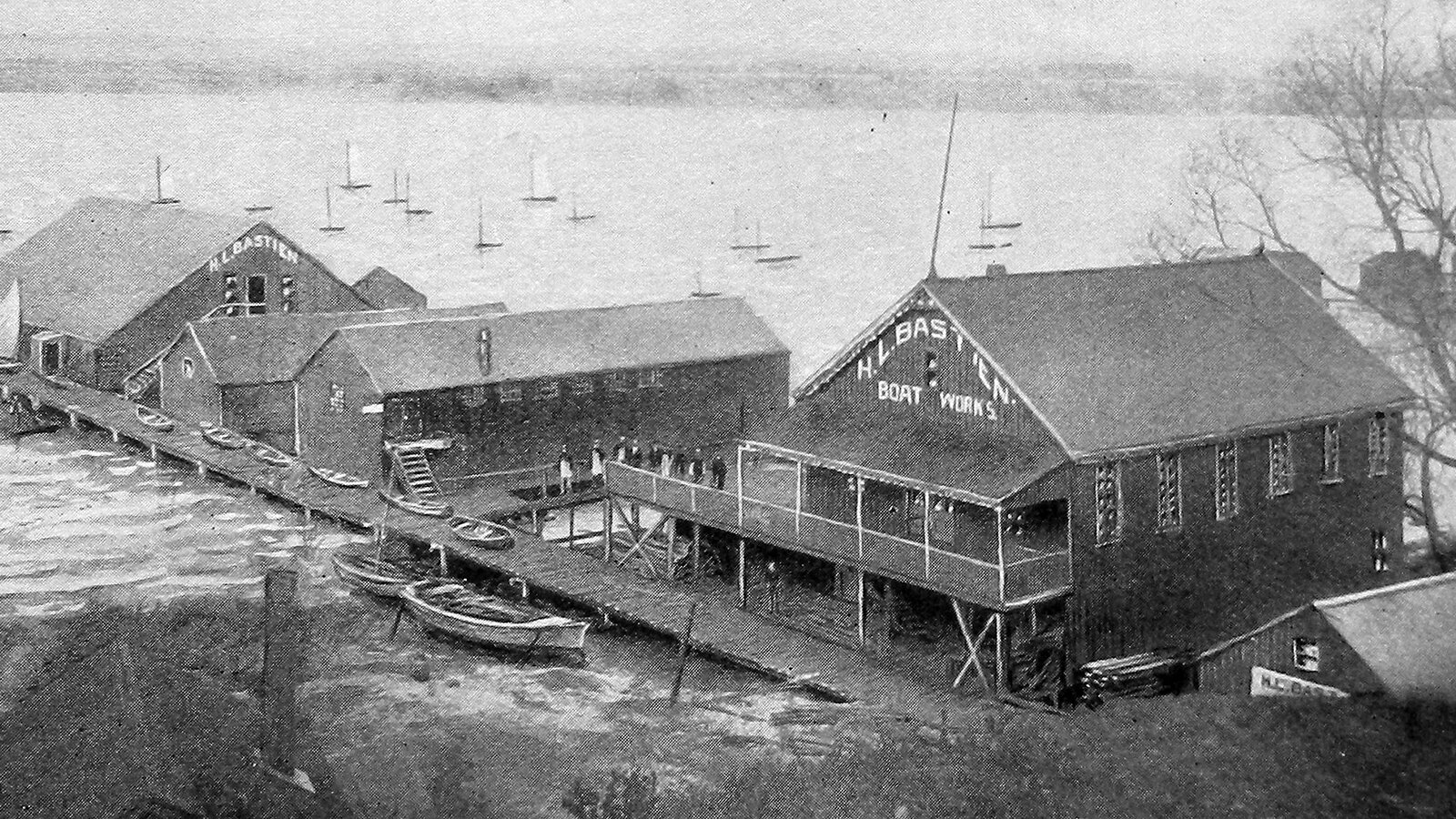The Boat Builders
West end of Ferrie Street overlooking the bay
This stretch of shoreline was once home to a number of Hamilton waterfront industries: marine foundries, ice houses, a sail loft and more. Most visible were the piers, boathouses and work yards of the city’s numerous boat builders. At the turn of the 20th century, a large number of these businesses dotted this end of the bay. At the base of the Ferrie Street hill was the boatworks of J. Whittaker and J. Massie. The Henry L. Bastien Boatworks was at the bottom of the Picton Street hill. Slightly north of this was the George Askew Boatworks. At the foot of Bay Street was the Robertson Brothers Boatworks.



Hamilton’s 19th century boat builders were capable of producing all types of vessels, from small canoes and dinghies to large lake steamers. This industry employed mostly skilled workers. Many of these men had served long apprenticeships as ship carpenters. At most yards, they worked year-round building new boats. Part of the winter would be spent repairing and refitting vessels of various sizes.
Production varied. Some boatbuilders produced mainly pleasure craft. Workers at Bastien’s turned out canoes, dinghies, rowboats, small sailboats and some larger sailboats and motorized launches. Other yards concentrated on the construction or refitting of larger vessels. The Hamilton Bridge and Tool Company at Stuart and Caroline streets built several large steamers. Large propeller or side-wheel driven steam craft were often docked at the Zealand, Robertson or MacKay yards for their winter overhaul.
In the early days, almost all boatbuilding was done by hand with traditional tools. By the turn of the century, some boatworks began to resemble small factories. Thomas Jutten’s large workshop boasted modern woodworking machinery powered by electricity. Over 35 men worked in this shop at the foot of Wellington Street. Twelve experienced workers found employment with Robertson Brothers. A good number of ship carpenters and machinists worked for the city’s larger boatbuilders, such as Bastien’s or Askew’s. In March of 1884, it was reported that workers in Bastien’s two-storey factory had built 60 boats and had 15 to go before the season opened.
It was not uncommon for master boatbuilders to have started out as workers. Henry Bastien was originally a ship carpenter for the Grand Trunk Railway. Thomas Jutten started out as a machine shop worker at the Burrow, Stewart and Milne Foundry on Cannon Street. Ben Kerr worked as a stonemason and then a plumber before opening his boatworks at the foot of Bay Street around 1910. By the 1920s, wooden boatbuilding couldn’t compete with new materials like fiberglass, and Hamilton’s North End boatbuilding industry slowly died away.
